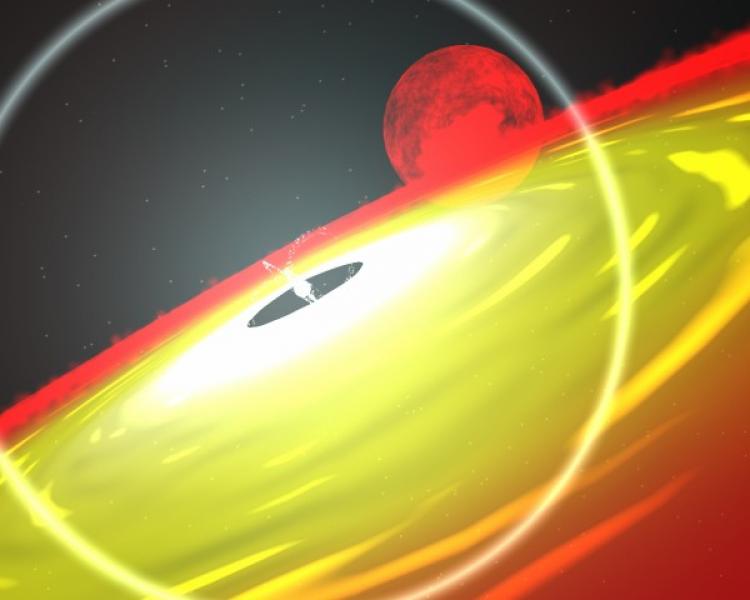For the first time, researchers have witnessed the rebirth of an ordinary, slow-rotating pulsar into a superfast millisecond pulsar with an almost infinitely extended lifespan.
Most pulsars spin relatively slowly at 10 rotations a second or less. This one has “spun up” to 592 revolutions a second with the help of an orbiting “companion star” that dumps matter onto the pulsar, causing it to spin faster.
The discovery was made during a large radio sky survey by an international team of astrophysicists from the USA, Canada, Australia, The Netherlands and Puerto Rico, lead by PhD student Anne Archibald and her supervisor Professor Victoria Kaspi of McGill University in Montreal, Canada.
“We know normal pulsars typically pulsate in the radio spectrum for one million to ten million years, but eventually they slow down enough to die out,” explained Professor Kaspi in a statement. “But a few of these old pulsars get ‘recycled’ into millisecond pulsars. They end up spinning extremely fast and then they can pulsate forever. How does nature manage to be so green?”
The pulsar, called PSR J1023+0038, is a superdense neutron star, which formed from the condensed core of a massive exploded star. It lies 4000 light years from Earth and is about the size of a large city.
Astronomers have long puzzled over the origin of millisecond pulsars. It was thought that as matter from the companion star fell into the pulsar’s gravitational field, it formed a flat, spinning “accretion disc” around the neutron star, but this has never actually been seen. About 10 years ago, another team spotted a disc of swirling matter around PSR J1023+0038, which at that time was just an ordinary pulsar. The disc has since disappeared, coinciding with the emergence of the millisecond pulsar.
The research is published online in the journal Science.
Most pulsars spin relatively slowly at 10 rotations a second or less. This one has “spun up” to 592 revolutions a second with the help of an orbiting “companion star” that dumps matter onto the pulsar, causing it to spin faster.
The discovery was made during a large radio sky survey by an international team of astrophysicists from the USA, Canada, Australia, The Netherlands and Puerto Rico, lead by PhD student Anne Archibald and her supervisor Professor Victoria Kaspi of McGill University in Montreal, Canada.
“We know normal pulsars typically pulsate in the radio spectrum for one million to ten million years, but eventually they slow down enough to die out,” explained Professor Kaspi in a statement. “But a few of these old pulsars get ‘recycled’ into millisecond pulsars. They end up spinning extremely fast and then they can pulsate forever. How does nature manage to be so green?”
The pulsar, called PSR J1023+0038, is a superdense neutron star, which formed from the condensed core of a massive exploded star. It lies 4000 light years from Earth and is about the size of a large city.
Astronomers have long puzzled over the origin of millisecond pulsars. It was thought that as matter from the companion star fell into the pulsar’s gravitational field, it formed a flat, spinning “accretion disc” around the neutron star, but this has never actually been seen. About 10 years ago, another team spotted a disc of swirling matter around PSR J1023+0038, which at that time was just an ordinary pulsar. The disc has since disappeared, coinciding with the emergence of the millisecond pulsar.
The research is published online in the journal Science.





Friends Read Free